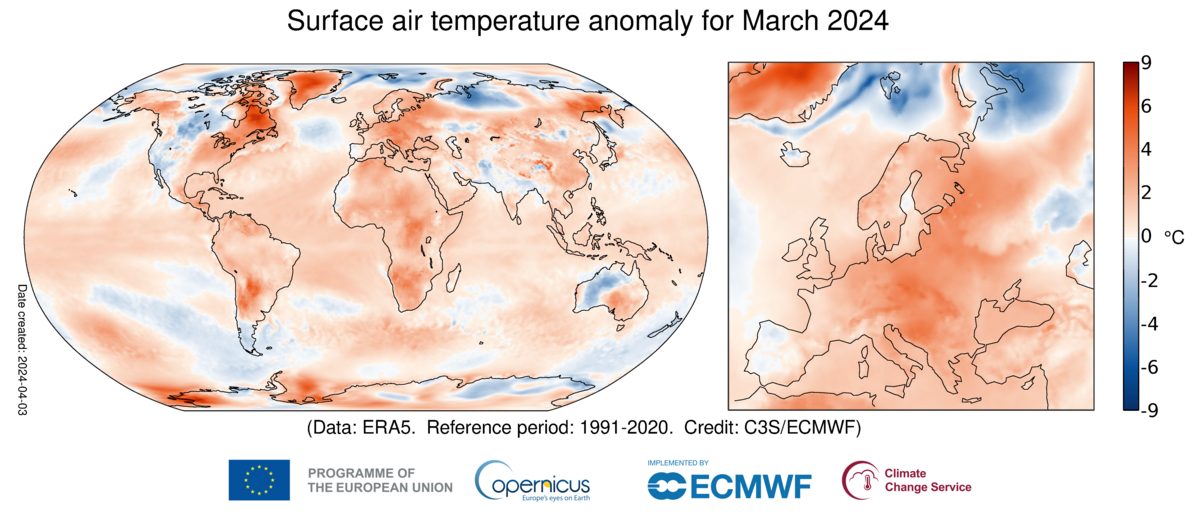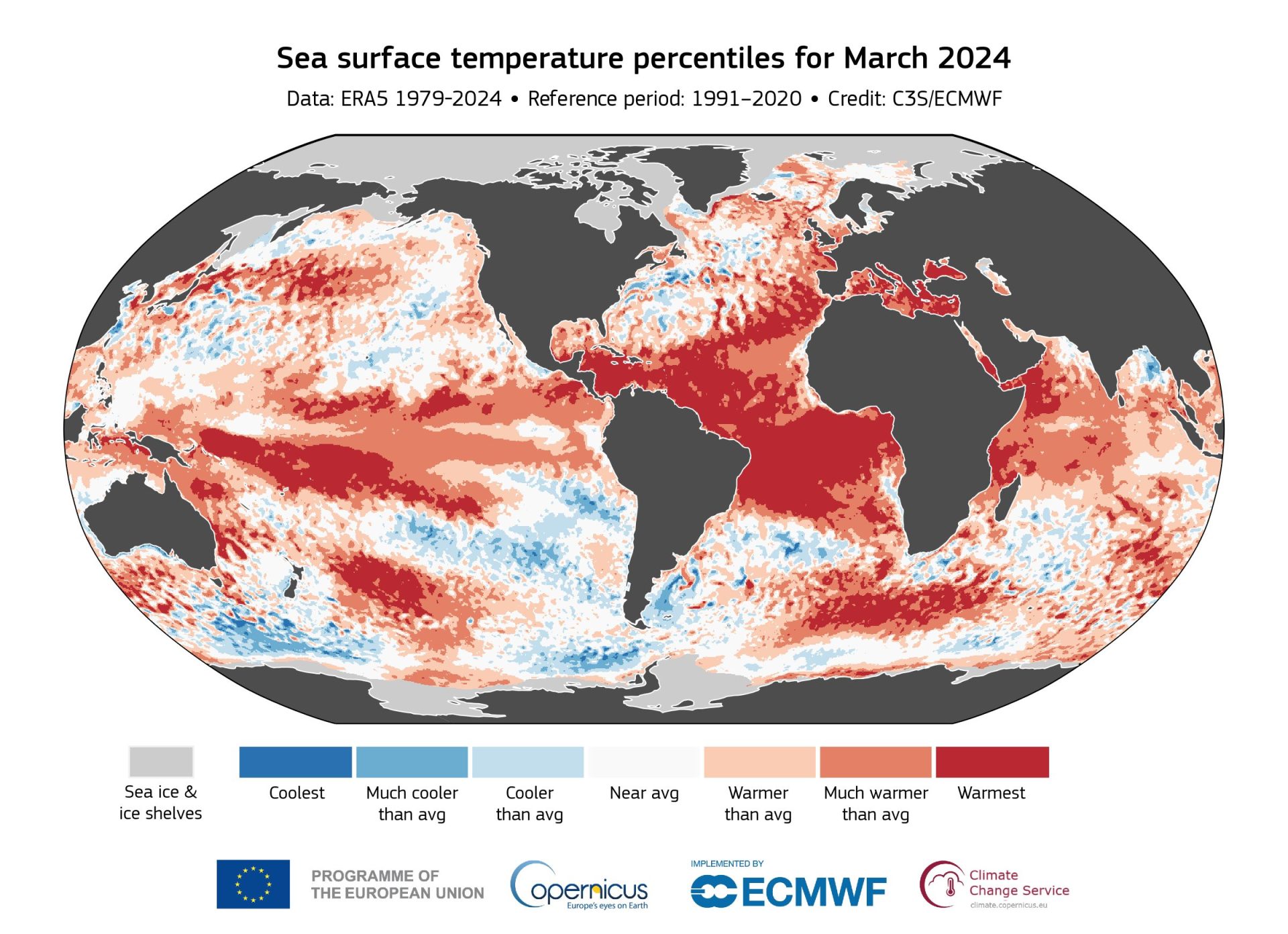
As reported by Copernicus Services, March 2024 was warmer globally than any previous March in the data record, with an average ERA5 surface air temperature of 14.14°C (57.92°F), 0.73°C (1.31°F) above the 1991-2020 average for March, and 0.10°C (0.18°F) above the previous high set in March 2016. This is the tenth month in a row that is the warmest on record for the respective month of the year. The month was 1.68°C (3.02°F) warmer than an estimate of the March average for 1850-1900, the designated pre-industrial reference period. The global average temperature for the past twelve months (April 2023 – March 2024) is the highest on record, at 0.70°C (1.26°F) above the 1991-2020 average and 1.58°C (2.84°F) above the 1850-1900 pre-industrial average.
The average European temperature for March 2024 was 2.12°C (3.82°F) above the 1991-2020 average for March, making the month the second warmest March on record for the continent, only a marginal 0.02°C (0.04°F) cooler than March 2014. Temperatures were mostly above average in central and eastern regions.
Outside Europe, temperatures were most above average over eastern North America, Greenland, eastern Russia, Central America, parts of South America, many parts of Africa, southern Australia, and parts of Antarctica.
El Niño continued to weaken in the eastern equatorial Pacific, but marine air temperatures in general remained at an unusually high level.

The global sea surface temperature averaged for March over 60°S–60°N was 21.07°C (69.93°F), the highest monthly value on record, marginally above the 21.06°C (69.91°F) recorded for February.
Temperatures averaged over the last 12 months were:
- above the 1991-2020 average over most of the globe, including much of Europe.
- below average over most of Finland, Iceland, Norway and Sweden
- well above average over land areas that include northeastern Canada, western Asia, and parts of South America, Africa and Antarctica
- a little below average over several small areas of land, including parts of Australia, Antarctica, and northwestern India.
- well above average over some seas around Antarctica and in the European sector of the Arctic, and over much of the North Pacific, part of the South Pacific, the Atlantic, and the south-western Indian Ocean
- well above average over the eastern equatorial Pacific, associated with the current El Niño event.
- below average over a few oceanic areas, particularly over part of the south-eastern Pacific Ocean and east of Greenland.
